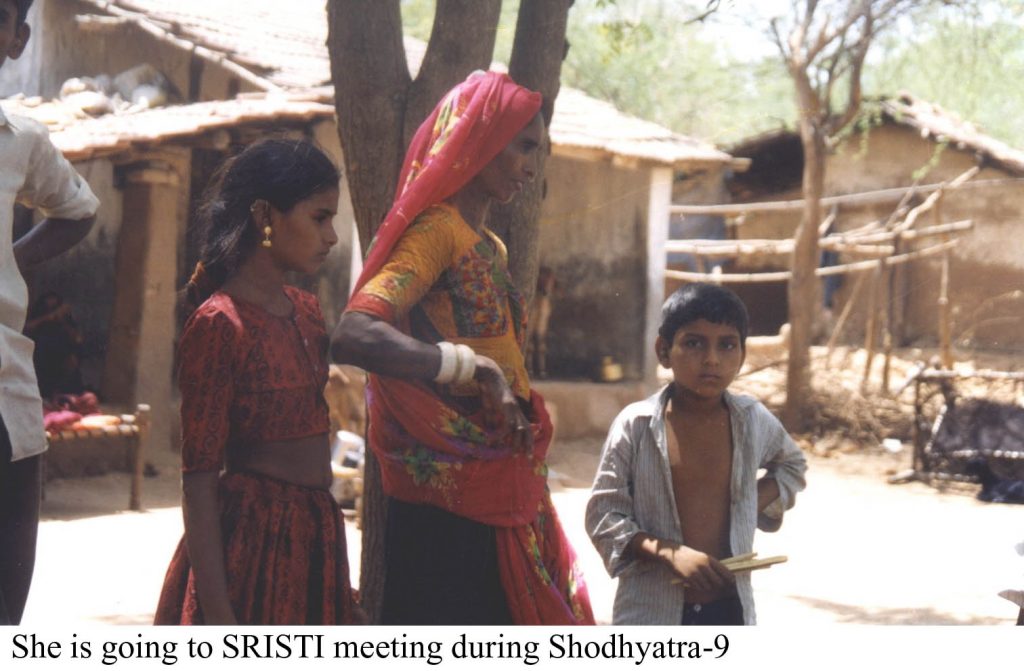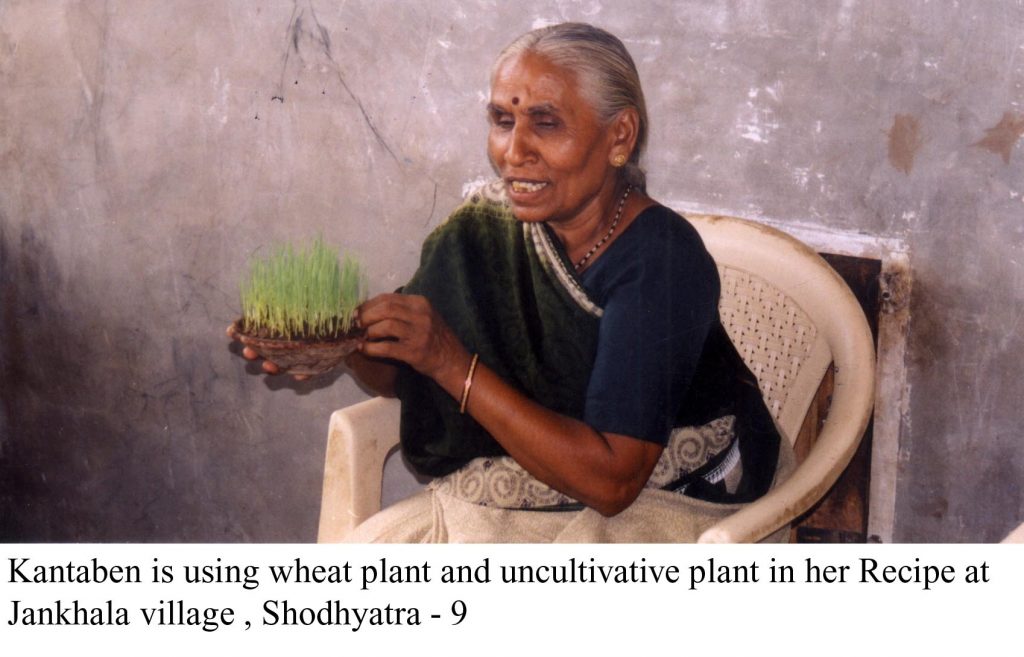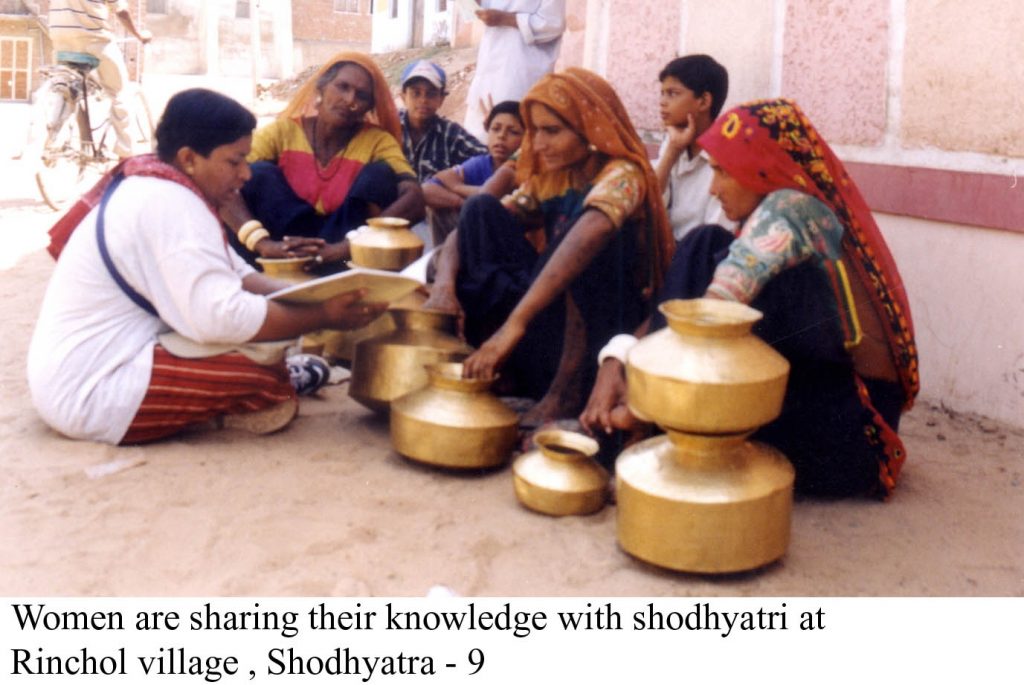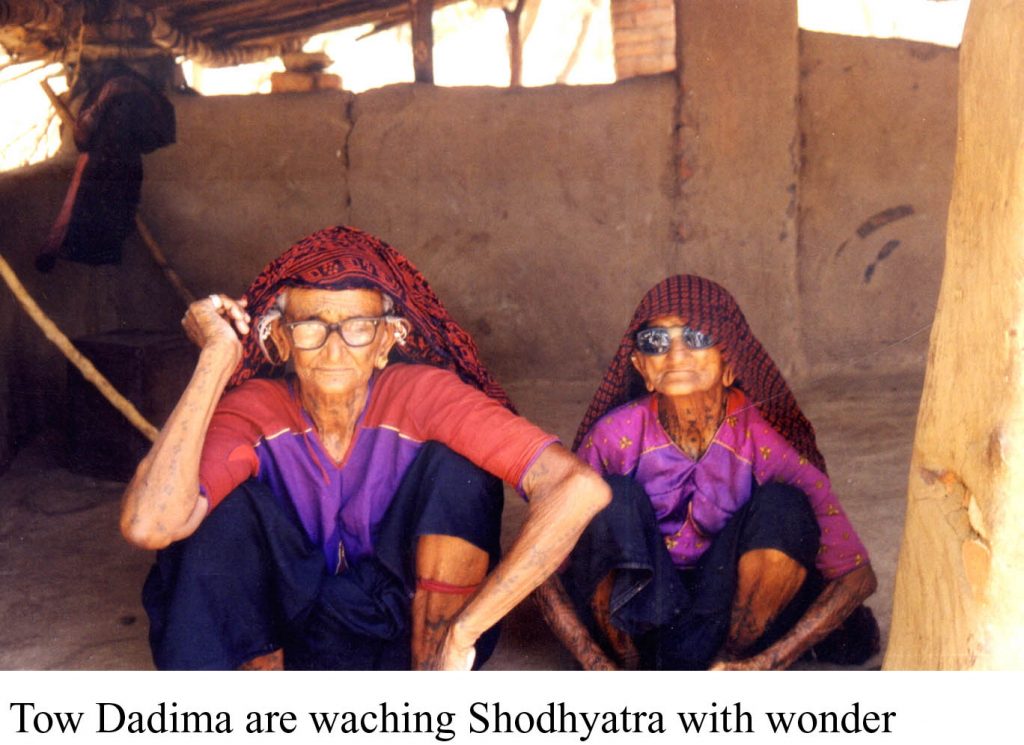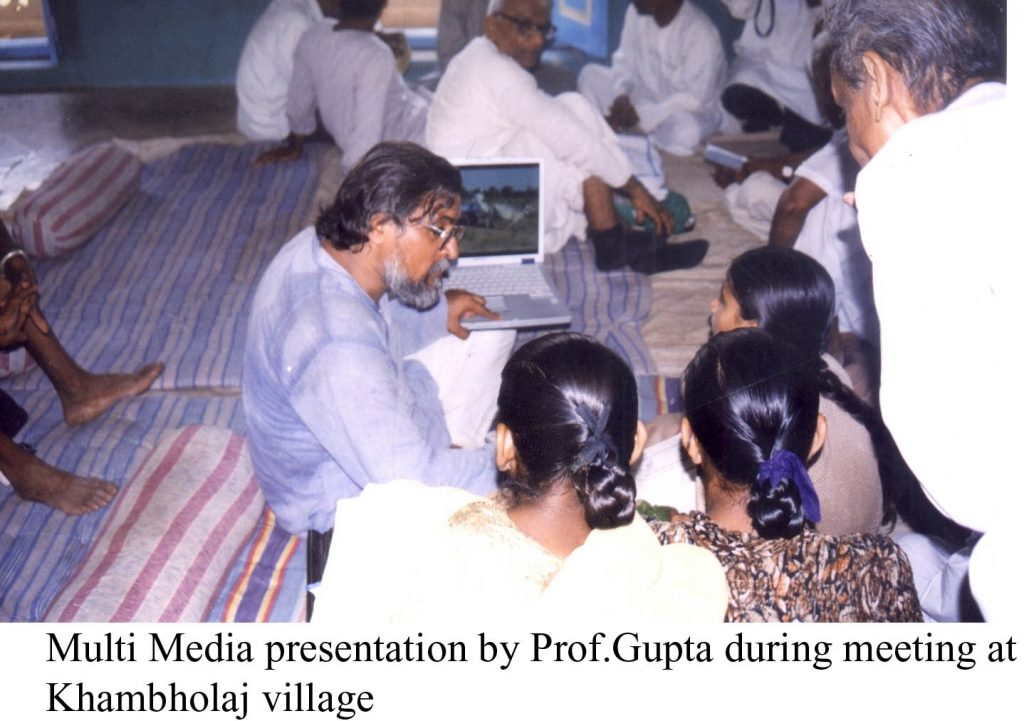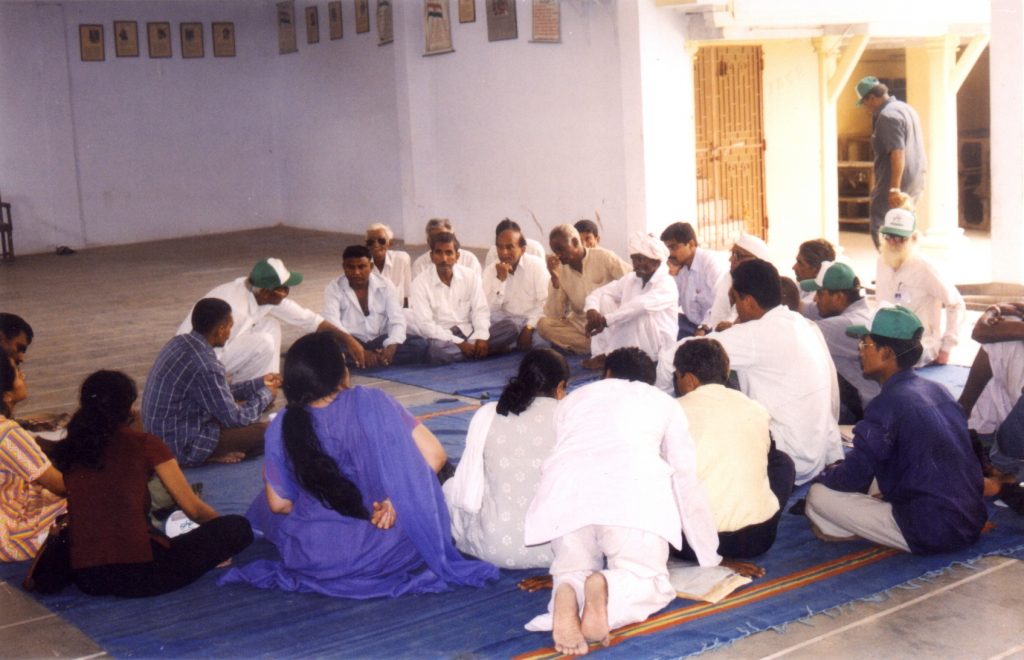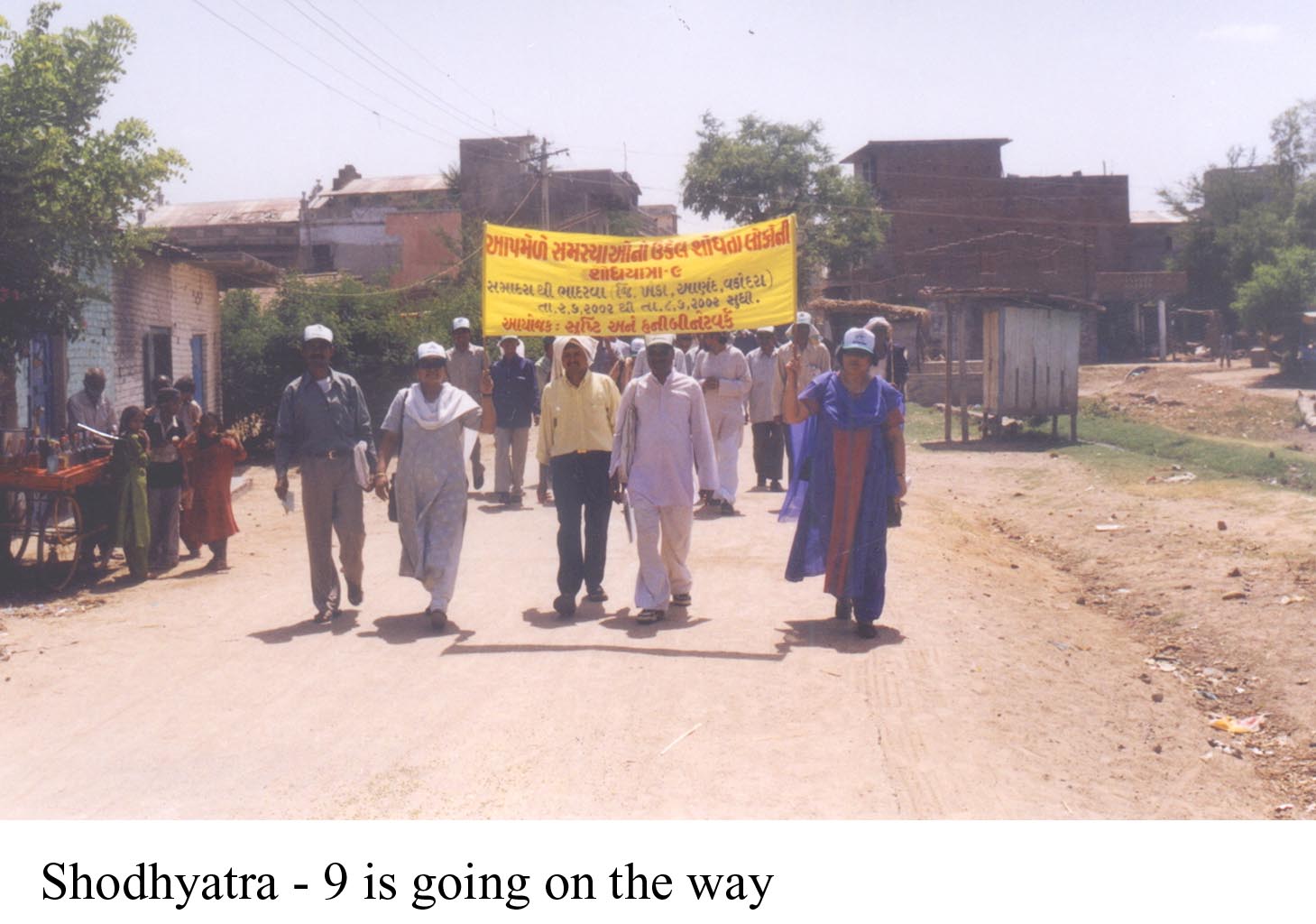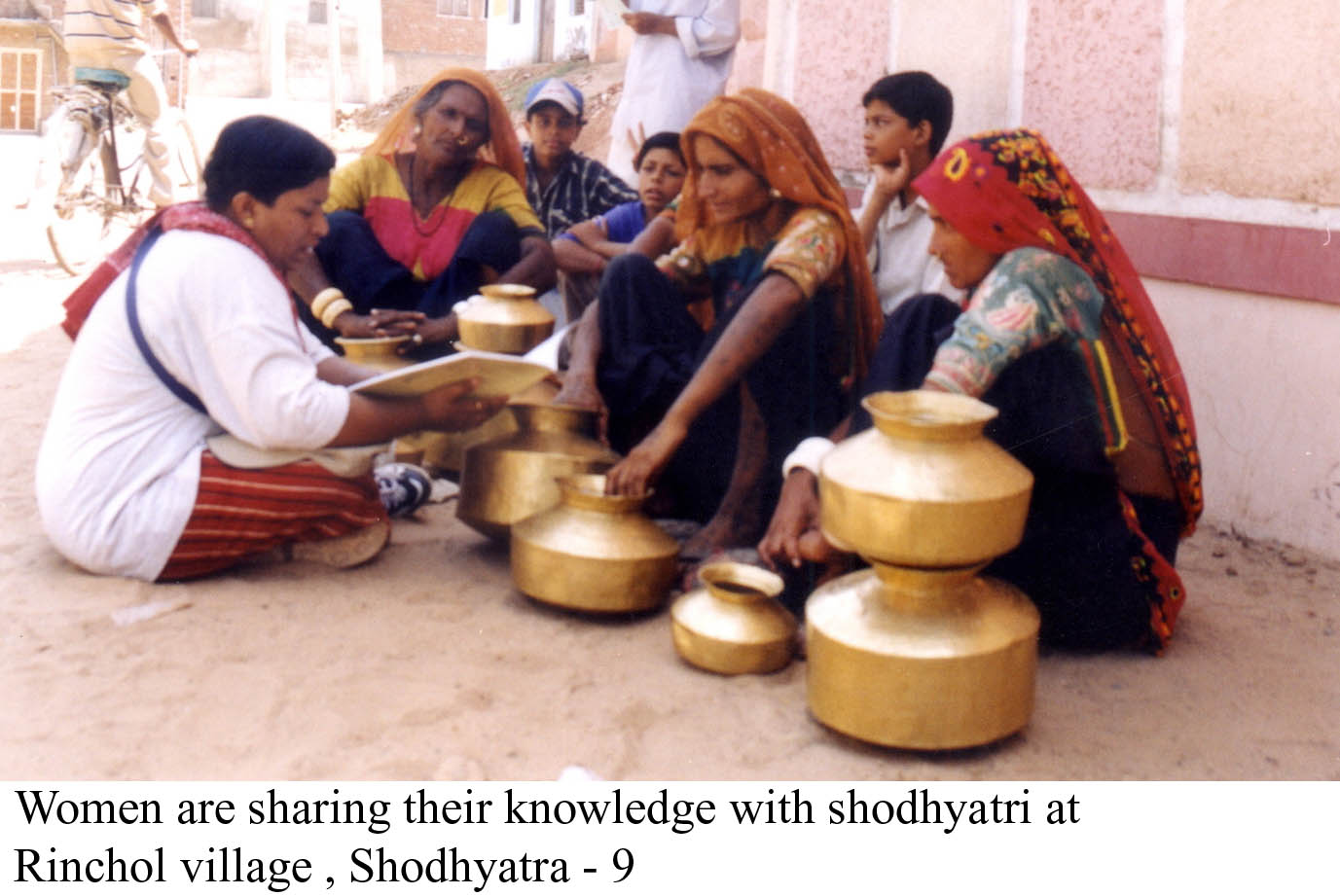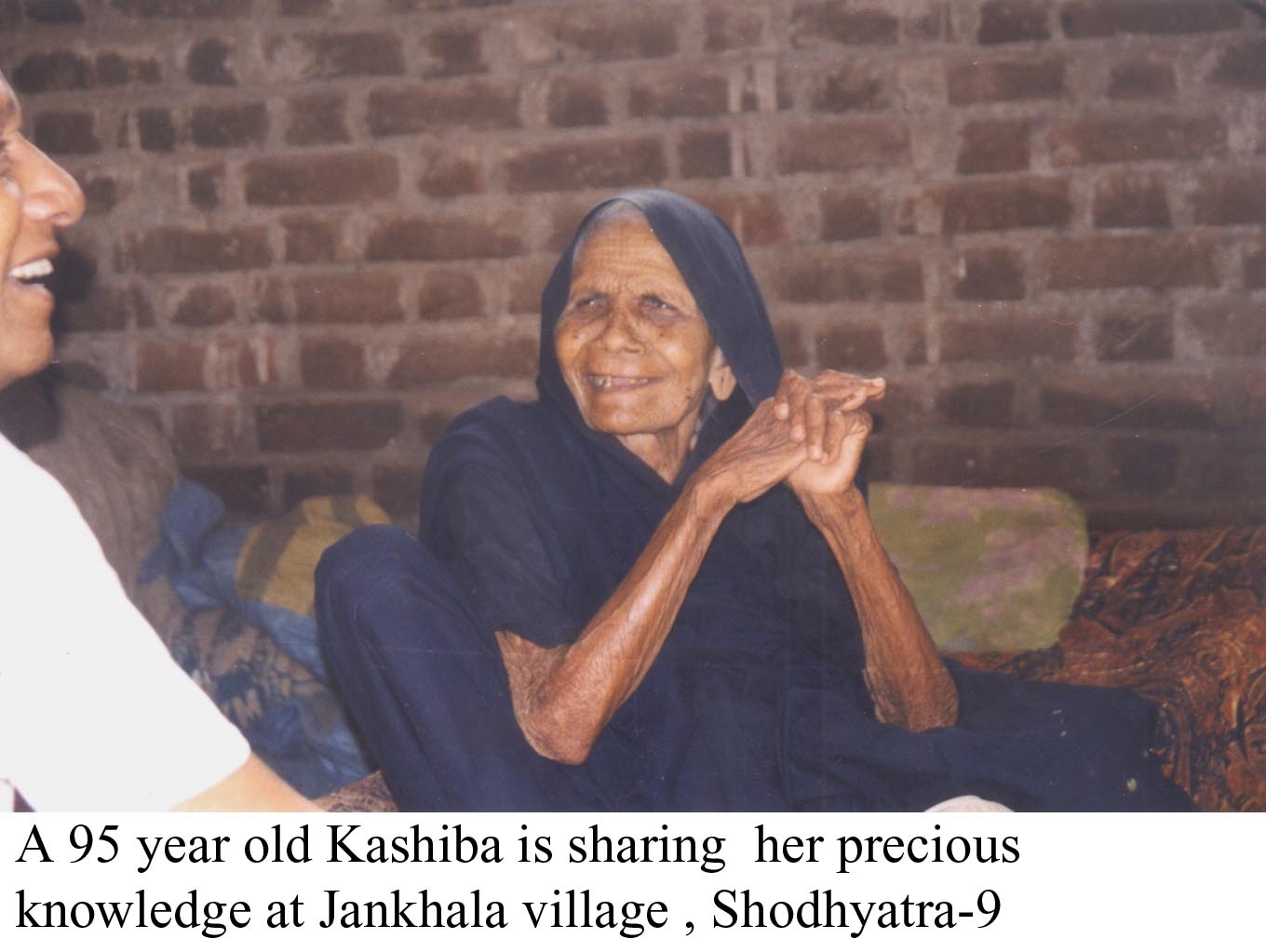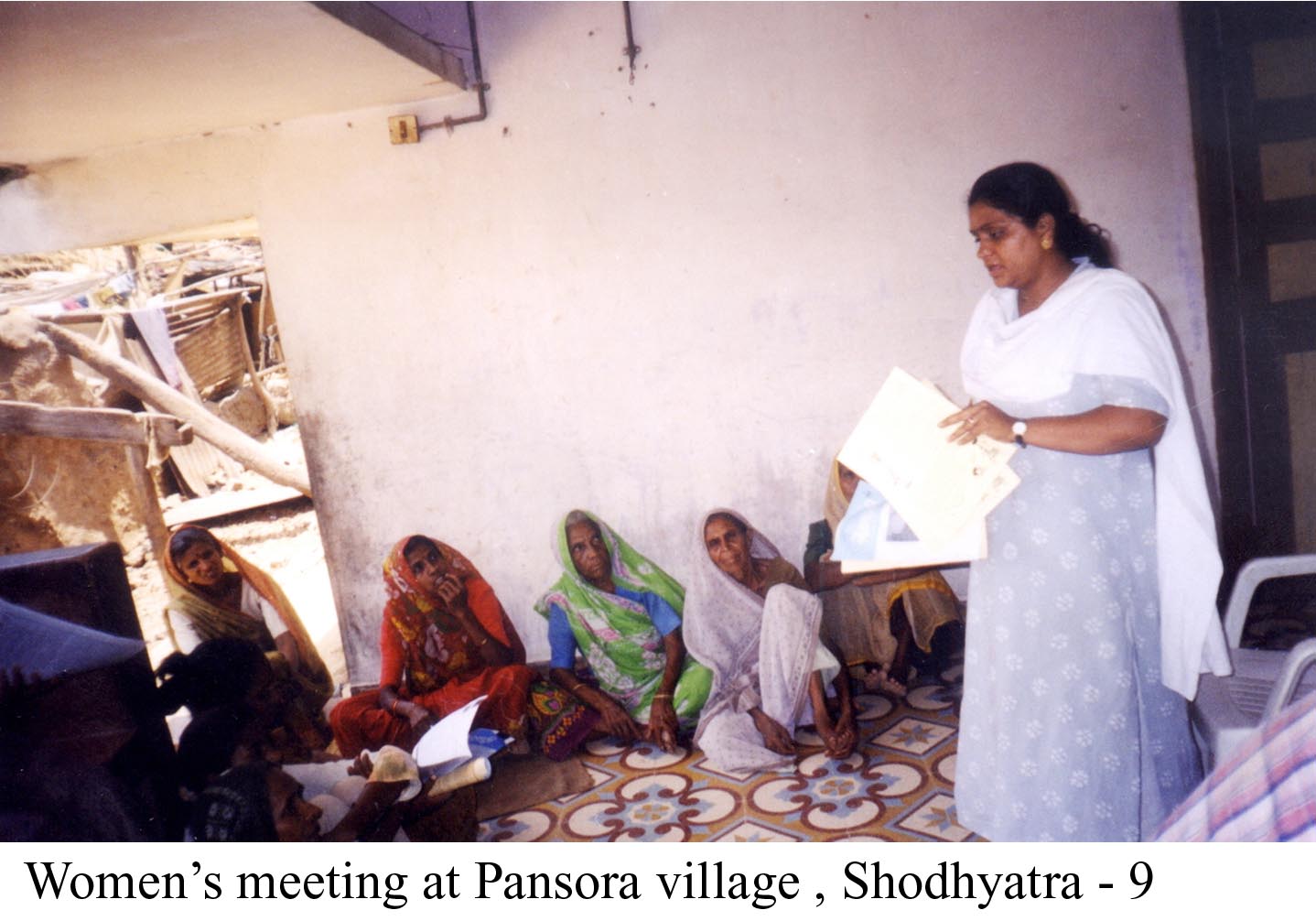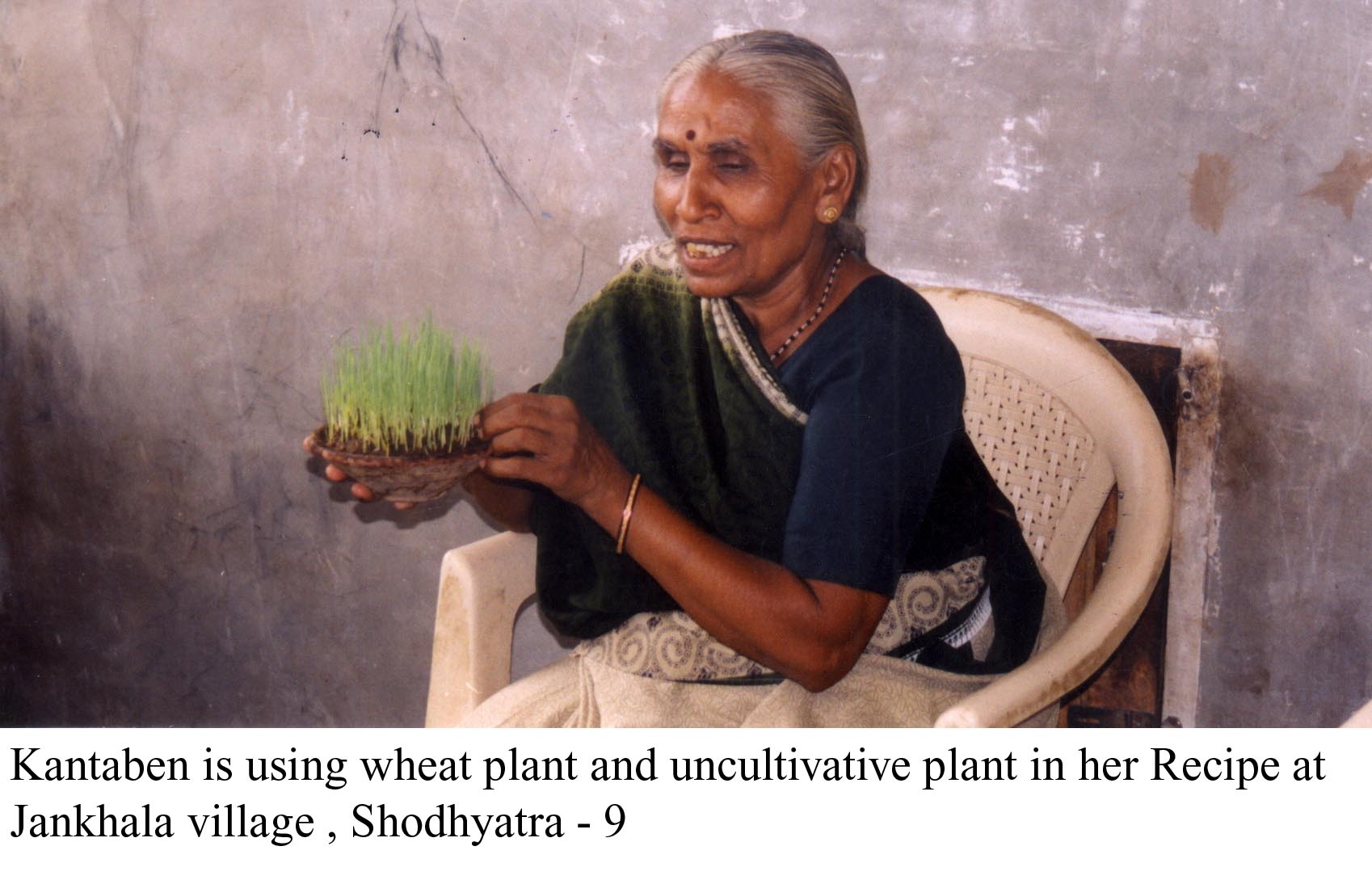Get Next Shodhyatra Update:
Phone:
079-27913293, 27912792
Email:
shodhyatra@sristi.org
SAMADARA VILLAGE (KHEDA) TO BHADARVA VILLAGE (VADODARA)
9th Shodhyatra, (June 2, 2002 to June 8, 2002)
The yatra covered three districts of northern Gujarat: Kheda, Anand and Vadodara.
The story of this journey goes back to the last one in Alwar district in Rajasthan (cf. Honey Bee 13(1)). A young farmer from Kheda, Achal Patel, had come and participated in the spirit of the shodhyatra. He proposed on the last day that the next yatra be taken out in his district, where it was sorely needed. So Achal took upon himself the organisation of the ninth shodhyatra, with the active support of his friends and SRISTI. This was a big step forward in our aim of making the shodhyatra self-sustainable, as we got both local logistical support as well as voluntary contributions from the participants.
The profile of the yatris was neither as varied as the last time, nor the number so great.
Against the hundred-plus participants in the last yatra, the ninth yatra had only thirty to forty people. One major deterring factor was the heat. While the sun danced its dizzy dance and beat upon our heads, we walked under the meager protection of pocket handkerchiefs or specially prepared shodhyatra caps. The distances between villages, also, were long and tough. That the yatris got through them in such heat and still held meetings in all the villages they visited is a tribute to their spirit.
A total of thirty innovators were scouted and honoured in the ninth shodhyatra, and we walked a total of ninety-six kilometres over a period of seven days.
THE ALCHEMY OF PROSPERITY
The reason that this yatra was sorely needed in the earmarked area was that Kheda district is known as the most developed and prosperous one of Gujarat and this most developed area is the one where the incidence of fertiliser and pesticide sprays is the highest. Consequently the focus of this yatra was more on promoting non-chemical/organic farming than on scouting innovations. All the previous shodhyatras had been held in less developed areas.
We began with several stereotypes: that the local people would be unreceptive, cynical and convinced of the sanctity of their own positions. To an extent this turned out to be true, but to another extent, it wasnt. Some villages did display the attitude of What will you teach us, we will teach you. In Utharva village there was violent opposition to our ideas and one drunk man sang the praises of chemical fertilisers! But in most villages what came out was a lurking strand of dissatisfaction and apprehension about the current trend of heaping more and more chemicals on to the fields.
BREAKING THROUGH
In the first village meeting itself, we had a long eclectic discussion on paddy cultivation. Raman kaka, an organic paddy farmer, Kanubhai Patel, a local farmer, Shri Pathak, a scientist from Rice Research Centre, and Shri Prabhatsinh, ex-Chairman of Amul Dairy, mulled over the virtues of cultivating a weed sama (Echinochloa colonum) in a rice field. The fact that there were farmers in this region, such as Kanubhai, who had grown paddy without chemicals boosted our confidence. The mention of a weed also led to talk of a gyan van, or a knowledge forest, a common space within the village where such normally uncultivated plants could be grown and conserved. Hopefully, Samadara has progressed with its plans for such a gyan van. This area of tobacco, pearl millet and rice cultivation has witnessed a decline in the prices of its produce while the prices of chemicals keep going up. We counted ourselves as successful the moment we were able to bring this dissatisfaction to light in their own minds, from behind the mists of resistance and denial.
In almost every meeting with the villagers, it was good to see at least one head nodding earnestly when we talked about rising prices and the degradation of land and health, among a crowd of many, sometimes apparently listless or uninterested, listeners. In one village, Heranj, when sufficiently provoked by our elderly and spirited comrade, Ram Bhau (What are you afraid of? Why dont you come forward and tell us? Not one among all of you sitting here is willing to experiment in a small piece of land?), six farmers volunteered to conduct experiments in one or two acres of their fields with the aid and support of SRISTI. This was the high point of the yatra, to have the farmers of a prosperous district agree that there was a problem and have them do something about it. Overall, fifteen farmers volunteered small parts of their farms for experiments in organic farming.
MELTING POT!
And then there was the walking. Intense and unforgiving, the heat rained down on us relentlessly, making the way seem so much more long and difficult. This was occasionally relieved by baths in canals along the way and nice treelined avenues between farms. As one yatri remarked, whatever else might be the case, in Kheda they have at least the splendid habit of planting their field borders with all manner of bush and tree.
There were also those who came, sometimes long distances, to walk with us in spite of the heat and the sweat. Ram Bhau, an organic farmer and an old associate, came from Maharashtra. Then there was Raman kaka, organic paddy farmer and a voluntary worker with an NGO. Raman kakas hair and beard were pure white and his spirit still young. Being an organic rice farmer he could talk to local rice farmers about how to go organic.
He also brought with him a graphic poster exhibition of the consequences of intensive chemical farming. And then there was Kalabhai Rabari of Ajroli Tabe village in Kheda district, an animal healer and our local touch. For the first time in a shodhyatra, we had a local innovator walking through the whole way with us. He had originally planned to stay only for a couple of days, but then the spirit caught him and he stayed for the entire journey. It was great to have him, with his stick carried on shoulders, his traditional attire and his unconstrained spirit of knowledge sharing. All in all, the ninth shodhyatra was an austere and sobering experience.
FLICKR GALLERY
